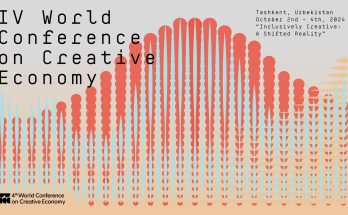

 Indians are no strangers to the art of giving. It is an integral part of our history and religion. Hinduism has ‘Daan’, Sikhism has ‘Seva’, Buddhism has ‘Dharma’, and Islam has ‘Waqf’. Therefore, it should come as no surprise that India’s crème-de-la crème has jumped on the philanthropy bandwagon as well.
Indians are no strangers to the art of giving. It is an integral part of our history and religion. Hinduism has ‘Daan’, Sikhism has ‘Seva’, Buddhism has ‘Dharma’, and Islam has ‘Waqf’. Therefore, it should come as no surprise that India’s crème-de-la crème has jumped on the philanthropy bandwagon as well.
Business tycoon Azim Premji recently joined the ranks of the world’s top five givers after donating $2.2 billion (12% stake in his Wipro empire) towards education via The Giving Pledge. The Giving Pledge was started by Bill Gates and Warren Buffet in 2010 and now has over 100 participants from across the world. Premji is India’s biggest giver. He’s not alone. In 2010, HCL’s Shiv Nadar committed to donate over 10% of his wealth towards philanthropic. In 2011, GM Rao pledged $340 million towards education of underprivileged children. It would seem India’s affluent class is doing its share of keeping the giving spirit alive.
Numbers don’t lie
According to Bain’s Philanthropy Report 2012, India’s rich increased their contributions from 2.3% of household income in 2010 to 3.1% in 2011. Impressed? Hold on for a second! It’s a third of the 9% of household income American millionaires gave to charity in the same period. Considering India has over 3.3 million NGOs compared to 1.5 million in the US, we should be raising twice as much for social causes.
So let’s not pat ourselves on the back yet! According to The World Giving Index 2012, India ranks near the bottom of the list at number 133. For a nation that grew up with charity practically in its DNA, that’s kind of pathetic!
Consider, also, that there are 158,000 millionaires in India. According to Credit Suisse Research Institute’s Global Wealth Report 2012, this number is expected to rise by another 53% by 2017. India has the world’s 12th largest high network individual (HNI) population. So what possible reason could there be for such a low philanthropic ranking?
Let’s not bother with drawing comparisons to the Western nations. But just FYI – the US ranks 5th, the UK at 8th. The top of the ladder, at number one, is Australia.
Let’s, instead, see how we fare, compared to our Asian counterparts in the magnitude of generosity. Pakistan holds the 85th position. India’s other neighbors Bangladesh and Nepal rank 109 and 115 respectively. Sri Lanka is at 15. The small SEA countries such as Indonesia and Thailand are even more charitable at ranks 7 and 26, respectively.
The only respite is that our lead competitor China ranks lower than us at 141; but really, it’s not something we should brag about.
This is quite a wake up call. Personally, I see a lot of people donating their time and money. But the story runs deeper…
Directionless Giving
It’s not that Indians don’t donate. But our model of giving differs from the rest of the world. As mentioned earlier, religion is a big force behind philanthropy in India. However, such contributions usually do not have a long-term impact on the issues that can be tackled via charity.
Donors often make contributions without a specific cause or goal in mind. Such donations have a tendency to get lost in the system and do not yield clear results. Giving for the sake of giving without outlining desired results leads to inefficiencies in the system.
A lot of the donations go to waste. We must ask ourselves if the kilos of gold gifted to various temples actually help in providing for poor people or impact, say, education in village schools.
Says Radhika Nayar, who leads the Indian Philanthropy Forum team at Dasra (India’s leading strategic philanthropy foundation): “Donations in the name of religion could be better utilised. Beyond religious institutions, everyone with the power and privilege to give has to ask themselves if they are giving effectively. If approached strategically, philanthropy has the power to address many of India’s urgent social challenges.”
Weak impact measurement system
While there is a perceptible increase in philanthropic efforts by people, there is also a lot of scepticism about the value of giving to the social sector. The lack of information on how to give effectively impedes giving.
London Business School defines impact as “an outcome, less an estimate of what changes would have happened without any intervention”. This form of measurement is especially difficult in a country like India.
There is a need for a better system to measure the impact of contributions. We also know there is no concept of zero-intervention in India. And that’s a reality even NGO’s and charity organisations have to deal with. “Donors need to understand that a part of their responsibility to society is to make sure that their contributions lead to real change or impact on the ground. This involves understanding the NGO’s mission and precisely how it will use the funds to advance a sector or cause,” explains Arjav Chakravarti, Impact Assessment Manager, Dasra.
According to the Bain survey, only 38% of donors receive at least a quarterly communication from the NGOs they fund, while more than 60% do not receive regular communication. And of those NGOs that communicate, the majority do not convey any information about the impact of their efforts.
“Donors should ask the NGOs for multi-year targets and plans and request for quarterly or half-yearly reports,” says Chakravarti. “Simultaneously, donors need to understand that NGOs work in extremely difficult environments and they should help by contributing time, skills and access to networks. While donors should ask for quantitative indicators, numbers do not always tell the entire story. Qualitative indicators, such as changes in a community’s attitude towards child marriage or gender equality, are equally important for understanding the desired impact.”
Donors and NGOs need to work as equal partners with a shared responsibility towards those in need. In India, Dasra is one of very few organisations that tracks the NGOs it enables, the way angel investors follow the startups they fund.
Against this backdrop, the Bain report highlights that “a paucity of resources and clarity around measurement is prompting many NGOs to work according to a suboptimal set of performance assessment metrics.”
“The first step, then, to enhancing philanthropic impact is to address this definition disconnect among the different stakeholders and create a shared vocabulary around impact.”
A New Model of Philanthropy
Marc A. Pitman in his book ‘Ask Without Fear! A Simple Guide to Connecting Donors with What Matters to Them Most’ said, “Fundraising is an extreme sport!” Any NGO in India will tell you the same thing. Most organisations lack skills and plans needed to scale. Very few measure their impact in a robust manner. Individuals with the interest and capacity to give do not know how to convert this interest into action.
It’s time to adopt a modern philanthropic model which leads to focused giving and is backed by a clear impact-measurement system: A research-based approach to giving that will prioritise impact, transparency and accountability. This will help us actually celebrate the contributions by assessing their result and improvements in various areas.
“Our interviews indicate that one major point of discord among NGOs is the need to sensitise donors about sector-specific challenges,” points out the Bain report. “If donors are educated about the complexities of the sector early in a programme’s life cycle, they are more likely to appreciate the choices and trade-offs made by the NGOs — and less likely to be dissatisfied with the impact created.”
Clear impact metrics is the key
A new model of philanthropy will help us assess impact on not just a quantitative platform but on a qualitative front too. We need to research, define and standardize impact metrics that are relevant to the Indian system of giving. Without such efforts, NGOs and charity organisations will continue to struggle with impact measurement.
A modern model will allow us to move from focusing on short-term limited impact to results that are sustainable in the long-term and tackle the problems head on.
Clearly, defined sector-specific impact metrics will not only help us keep track of the utilisation of benefits, but it will also bring to the forefront the many causes that need our attention. At the same time, it will encourage donors from all income segments to donate more. An efficient system will also reduce wastage and directionless giving.
Author Profile
Latest entries
 CultureAugust 4, 2013Mission Possible: Shed your fears, fundraising can be fun
CultureAugust 4, 2013Mission Possible: Shed your fears, fundraising can be fun CultureJune 14, 2013Flying high in India: The New Snob Index
CultureJune 14, 2013Flying high in India: The New Snob Index TravelMay 24, 2013Travel-Happy Indians: Summer kindles wanderlust, thirst for Abroad
TravelMay 24, 2013Travel-Happy Indians: Summer kindles wanderlust, thirst for Abroad CultureMay 19, 2013Reinventing the Art of Giving – A New Model of Philanthropy
CultureMay 19, 2013Reinventing the Art of Giving – A New Model of Philanthropy







